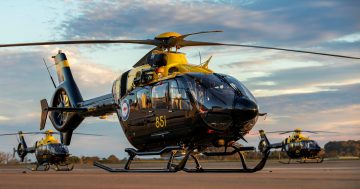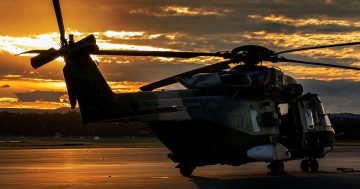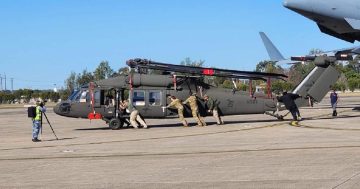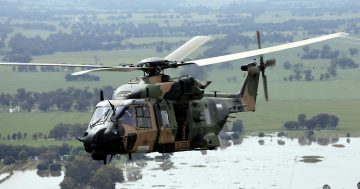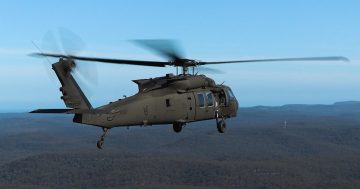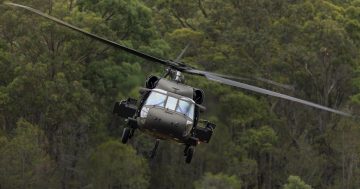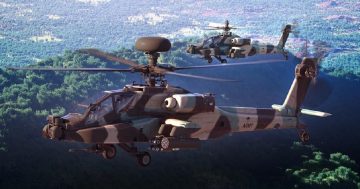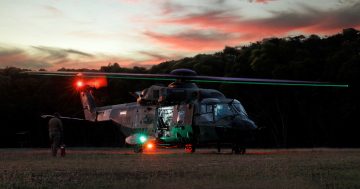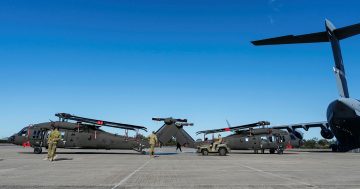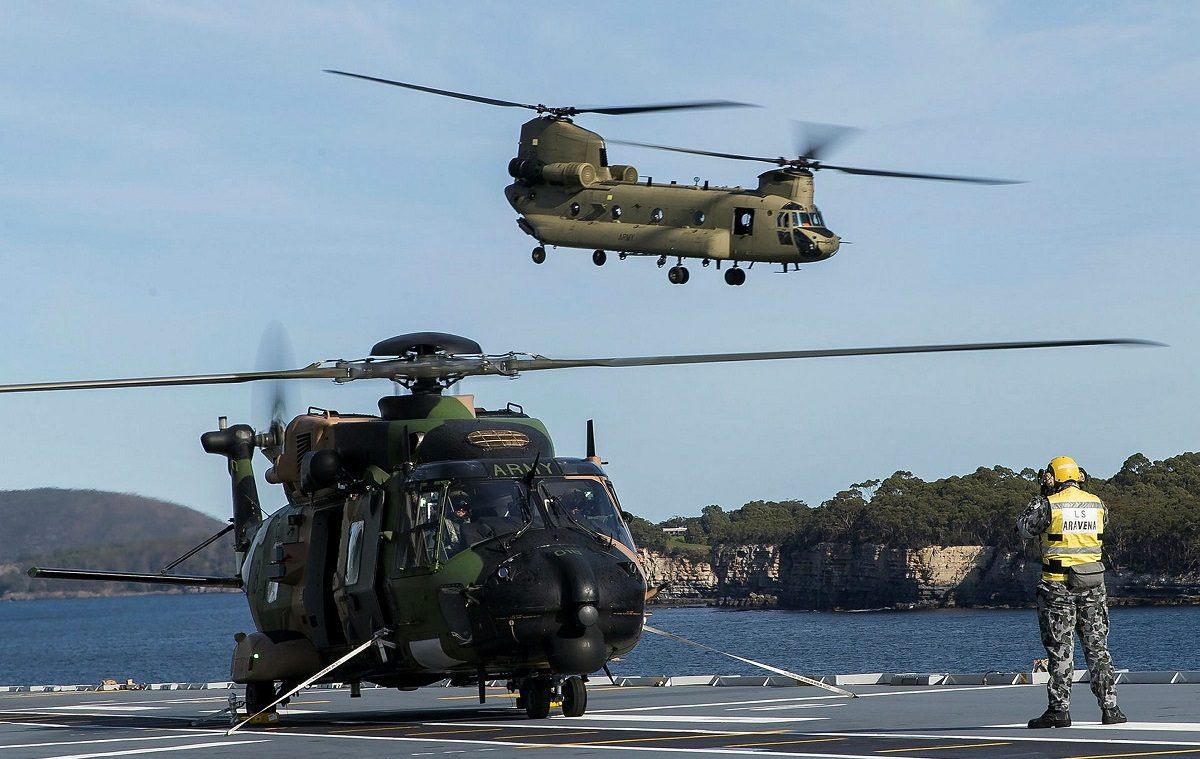
With the MRH-90 (foreground) fleet grounded, Army’s 14 CH-47F Chinooks (background) will likely be asked to work a little harder to support transport missions. Photo: ADF.
The Australian Army is about to go through a period of operational churn in its aviation ranks, with the changeover of two of its three main helicopter types, the introduction of a new uncrewed aerial system (UAS), new basing facilities to be constructed, and the possibility of a new fixed-wing aircraft capability.
The tragic 28 July crash of an MRH-90 Taipan in Queensland and the subsequent grounding of the remaining fleet has left the army with a huge, but hopefully temporary, capability gap.
The MRH-90 story is not a happy one for Defence. Selected in 2004 to initially augment and then later replace the older S-70A-9 Black Hawks in service, the MRH-90 was chosen ahead of the then-new model UH-60M Black Hawk.
That decision was widely reported to have had much political influence due to the greater Australian Industry Content (AIC) offered by Eurocopter (now Airbus), which assembled the helicopters in Brisbane.
But, on paper at least, the MRH-90 did enjoy several capability advantages over the UH-60M including longer range, greater carrying capacity and a composite structure.
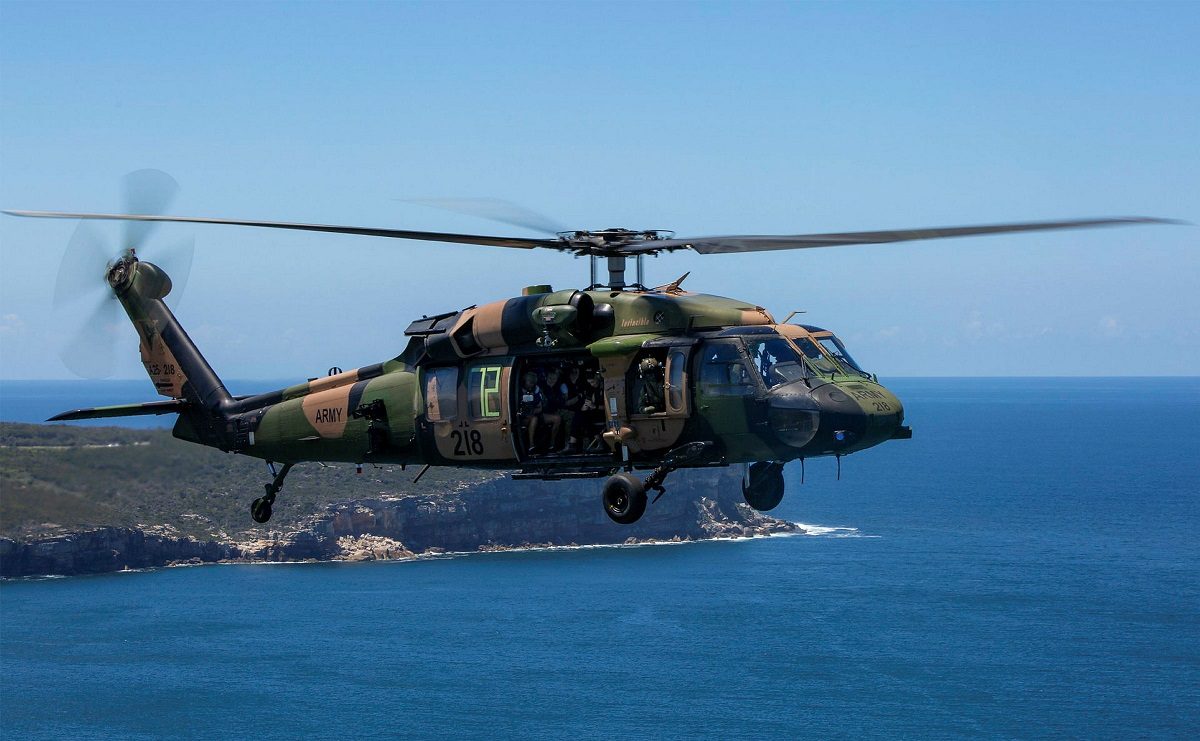
The S-70A-9 Black Hawk entered service in the late 1980s and was retired in 2021. The new UH-60M model differs in having more advanced digital avionics, reinforced structure and other major systems improvements. Photo: ADF.
But numerous fleet-wide groundings, shortages of spare parts, and difficulty in maintaining a baseline configuration all meant the MRH-90 held more or less a permanent place on the government’s Projects of Concern list, and the decision to retire it 13 years earlier than planned was taken in late 2021.
Despite the delivery of the first two of 40 new UH-60M Black Hawk helicopters on 30 July, it is unlikely even an initial operational capability of one squadron of Black Hawks can be stood up before the end of 2024, and that a full capability likely won’t be in place until 2026.
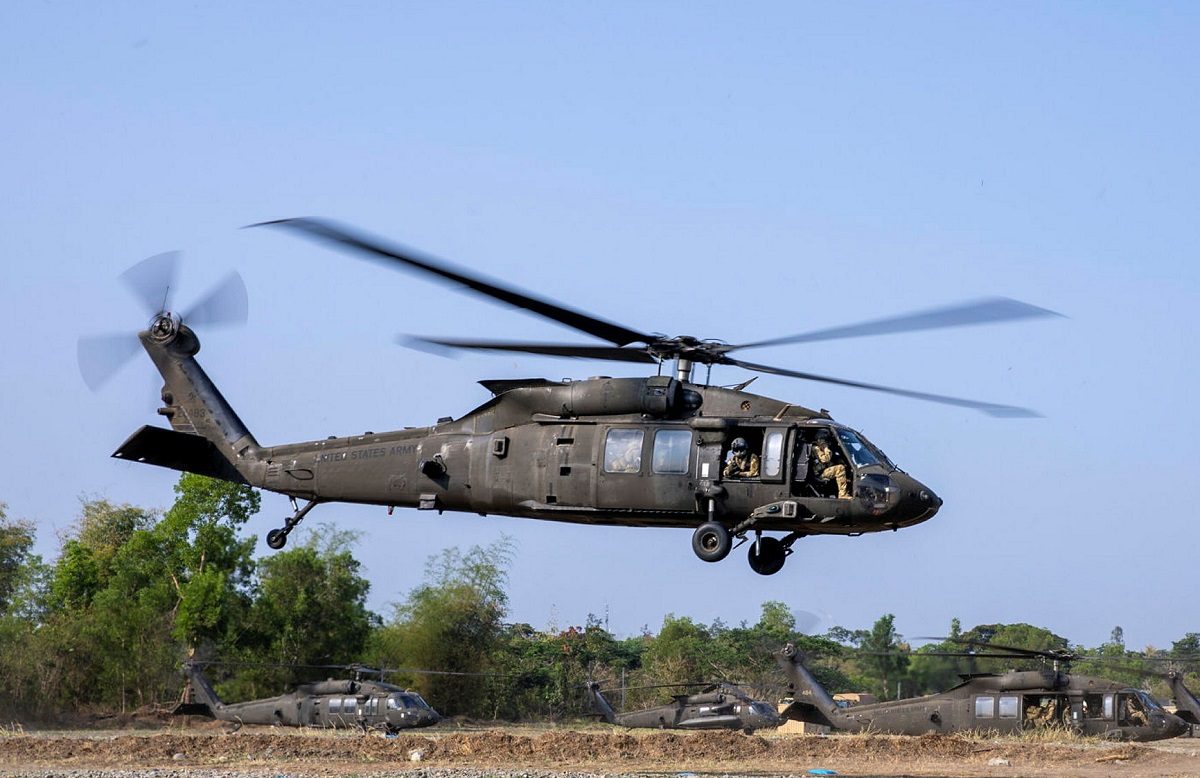
US Army UH-60M Black Hawks at Exercise Talisman Sabre 2021. Photo: ADF.
The rapid pace of the Black Hawk acquisition has potentially put a strain on Army Aviation Command led by the highly regarded Major General Steve Jobson, with aircrew and maintenance personnel having to train on the new machine, while the army continued – until last week at least – to operate the troubled MRH-90.
On top of this, the Holsworthy-based No 6 Aviation Regiment (6Avn) and 173 Squadron which operated the MRH-90 involved in the crash will be the first unit to operate the new Black Hawks. So, they will be inducting the new machines while they simultaneously go through a period of mourning for their lost comrades and they meticulously scrutinise their maintenance and operating procedures in the wake of the crash.
Despite the army’s older S-70A-9 Black Hawks only being retired in 2021, there is unlikely to be a great deal of useable ‘corporate knowledge’ available to the army to ease the transition to the new and quite different UH-60M model. One advantage will be that the army’s planned sustainment partner on the Black Hawk – Sikorsky Australia – is already well-established at nearby Nowra in support of the Navy’s similar MH-60R Seahawks, so that transition should be a relatively smooth one.
But while the Black Hawk is being introduced, the army is also preparing to divest itself of the Darwin-based Tiger Armed Reconnaissance Helicopter (ARH) from 2025, while it simultaneously builds new or upgrades older facilities in Townsville and establishes a training flight there to prepare for the arrival of the Tiger’s replacement, the Boeing AH-64E Apache Guardian attack helicopter.
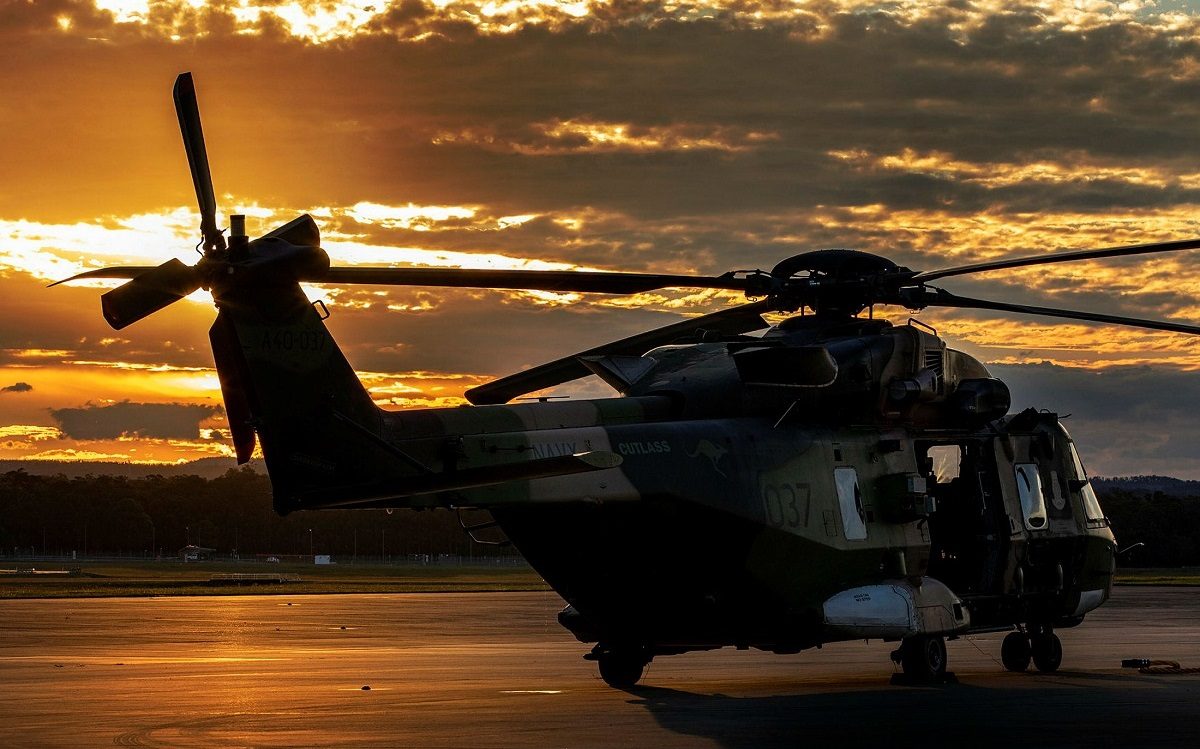
The MRH-90 has had a troubled service life with the ADF, and will be withdrawn 13 years earlier than planned. Photo: ADF
Although not as bad as the Taipan, the Tiger ARH has also had a troubled service life with many of the same issues, although in recent years has enjoyed greater levels of availability and reduced operating costs.
Also like the Taipan, the Tiger will be replaced by a helicopter it was originally selected ahead of way back in 1999. At that time, the Tiger was considered to be cheaper, faster and nimbler than the Apache, and offered the same AIC potential as the MRH-90.
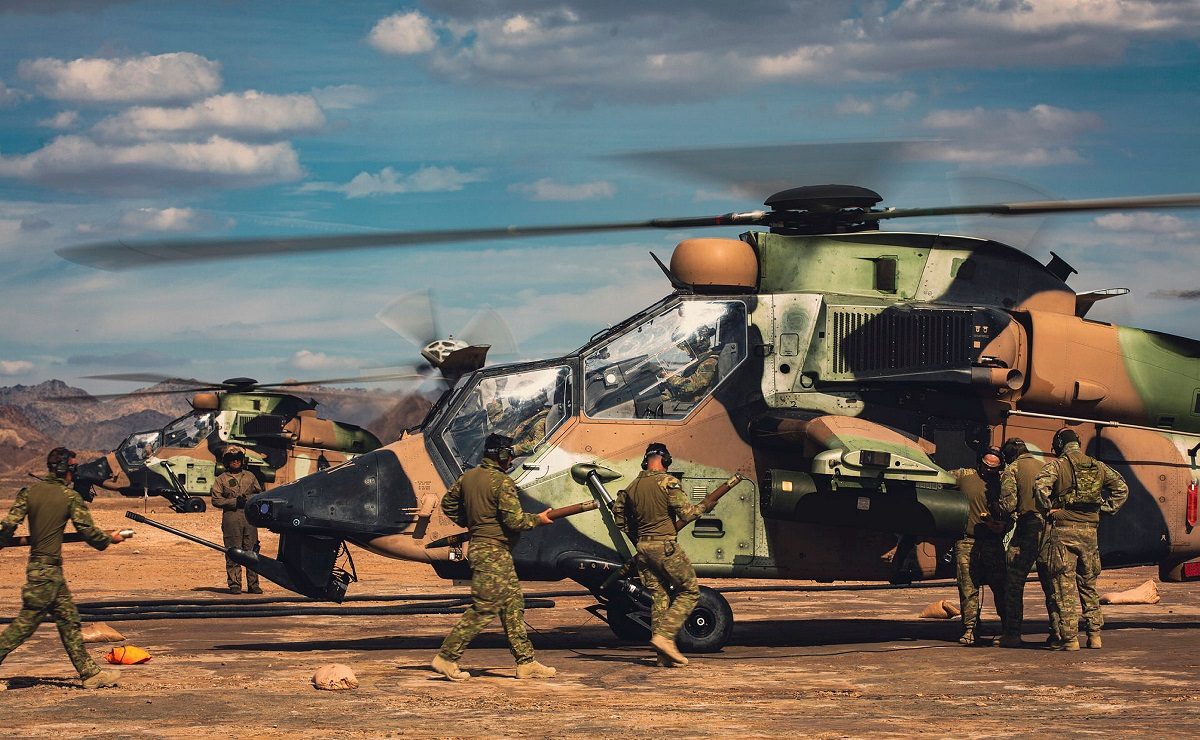
The Tiger ARH experienced many of the same availability issues as the MRH-90, but has matured and stabilised in service in recent years. Photo: ADF
Army’s Brisbane-based 20th Surveillance and Target Acquisition Regiment is also currently replacing its Shadow 200 tactical uncrewed aerial system (TUAS) with the newer Insitu Integrator UAS under Project LAND 129 Phase 3, while Army Aviation Command reportedly has a nascent requirement for a new fixed-wing single-engine aircraft that can operate into rough airfields.
The larger Boeing CH-47F Chinook operated by C Squadron, 5Avn at Townsville is now a mature capability and is well-understood, but that fleet may be working a little harder to cover transport requirements during the period of the MRH-90 stand down.
The safe introduction of a new aircraft type is a major effort for any armed service, especially one as small as the Australian Army. But to have two new aircraft enter service back-to-back, on top of the accident investigation, the new UAS, and the establishment of new basing facilities at Townsville will be a real challenge.
Original Article published by Andrew McLaughlin on Riotact.


